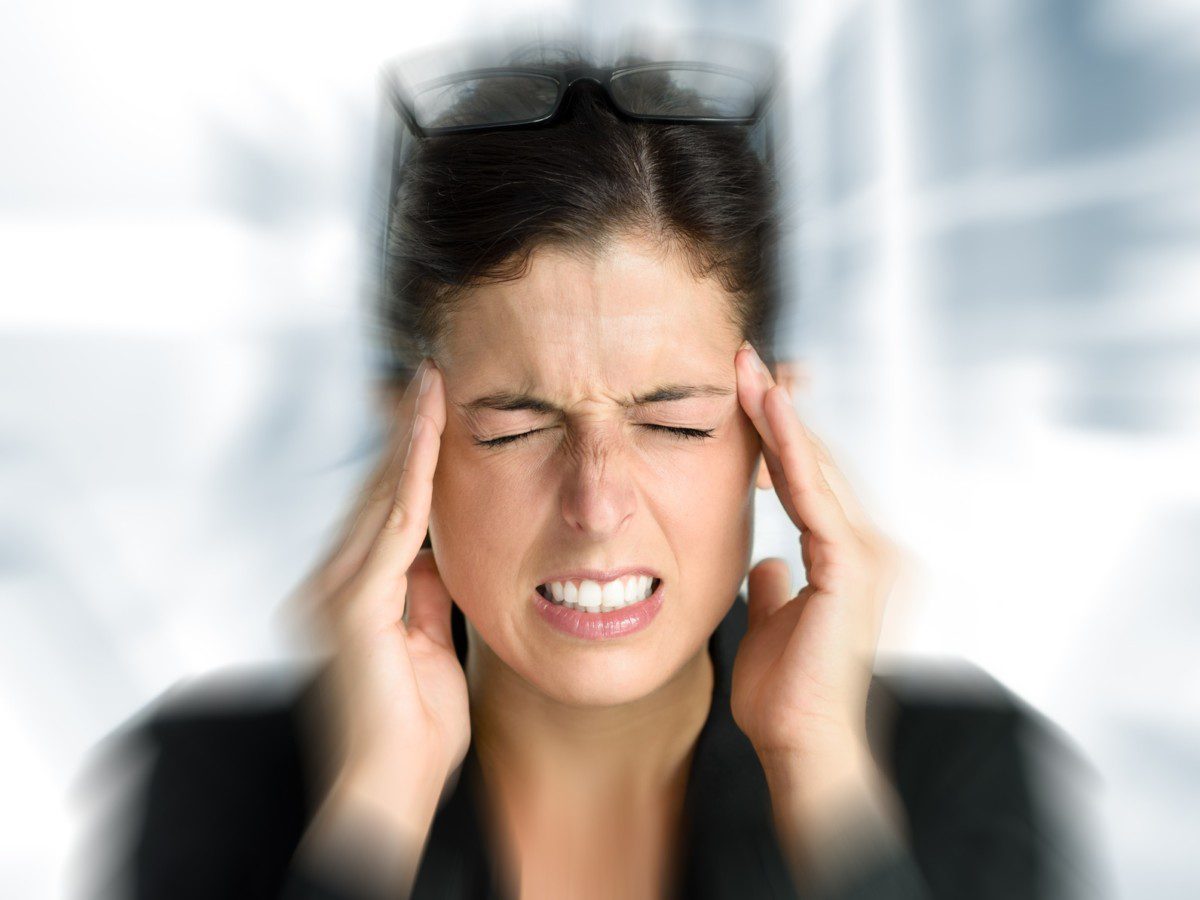[dropcap]A[/dropcap]ccording to Science Daily, “Each year more than 12 million Americans visit their doctors complaining of headaches, which result in lost productivity and costs of upward of $31 billion annually. A new study suggests some of that cost could be offset by healthcare providers ordering fewer tests and an increased focus on counseling about lifestyle changes.”
Here are 10 little-known lifestyle habits that may be causing your headaches (and how to fix them):
1. Anxiety
One of the most common headache triggers is anxiety and stress. These headaches are fairly common, and the pain can range from moderate to severe.
The Fix
Breathing slowly in a quiet, dark space can help increase blood flow and provide an overall sense of relaxation. Dr. Andrew Weil suggests the 4-7-8 breathing method to relax. Inhale through your nose for a count of 4, hold your breath for a count of 7 and then exhale through your mouth for a count of eight.
2. Glare
Vision related problems are common for people who work on computers for more than 5 hours per day. The glare from computers and poor lighting can often lead to headaches.
The Fix
Get up from your desk and give your eyes a rest. Go outside to soak in some real light, the light that benefits your body. Ask for light bulbs that simulate natural light and use glare reducing shields on your computer.
3. Sleeping Patterns
In a study published in the journal Headache, researchers conducted a detailed sleep interview that asked the participants questions about their chronic headaches and their sleep patterns. More than 80% said they experienced headaches during the day when they woke tired.
The Fix
Establish a nighttime routine to encourage good sleep patterns. Start with turning off electronics an hour before bed, limiting your caffeine intake close to bedtime, and eat and drink lightly in the evenings. Finally, make sure you are getting enough sleep. Most health professionals suggest 7-8 hours per evening.
4. Nutrition Choices
There is strong evidence that shows certain foods can trigger headaches, foods such as chocolate, dairy, proteins and alcohol. Everyone will have different triggers, and it can vary based on gender, weight, and overall health.
The Fix
Start a headache journal keeping track of your headaches and what you are eating. After a period, look back on your journal to see if you can find a pattern. Journaling is a good fix for identifying other triggers as well.
5. Noise
Constant or extremely loud noises can cause headaches. This happens because loud noises can cause your muscles to tighten which can lead to the headache pain.
The Fix
The obvious solution is to remove yourself from over-stimulating situations and seek quiet. If leaving a situation isn’t an option and you find yourself with noise headaches often, you might want to carry a pair of earplugs with you. They can help lessen the noise levels, so it doesn’t affect you as much.
6. Medication
Medication-induced headache is the third most common cause of headache after migraine and tension-type headache. Whether from the type of medication or overuse, certain medications can be the cause of your headaches.
The Fix
If you are noticing a correlation between any medications or supplements you are taking and the onset of headaches, consult your wellness provider to determine safe alternatives.
7. Physical Activity
Exercise headaches occur during strenuous exercise sessions and can also occur because of a lack of activity. The Mayo Clinic explains there are two categories of headaches, primary and secondary exercise headaches.
“Primary exercise headaches are usually harmless, aren’t connected to any underlying problems and can often be prevented with medication. Secondary exercise headaches are caused by an underlying, often serious problem within the brain — such as bleeding or a tumor — or outside the brain — such as coronary artery disease. Secondary exercise headaches may require emergency medical attention.”
The Fix
Not all exercise is created equal and understanding your routine and how to adjust it to certain situations is important to avoiding headaches. Do not exercise in extremely hot or cold conditions, take breaks during long exercises sessions, make sure to stay properly hydrated, and adjust your exercise routine based on elevation.
8. Hormones
For women, hormonal imbalance can often be the cause of headaches and tension. It often happens just before the start of their period when estrogen levels take a dive.
The Fix
There are natural ways to help balance your hormones to help alleviate the onset of headaches. Reduce your sugar intake, stay hydrated, use the 4-7-8 breathing technique mentioned earlier, and take supplements designed for this purpose. Dr. Sara Gottfried recommends Magnesium, CoQ10, and 5-HTP.
9. Posture
When you have poor posture, you can be causing undue strain on your muscles and it can even affect your breathing patterns by restricting proper airflow. These two effects of poor posture can bring on tension and neck-related headaches.
The Fix
Improving your posture is the first step in relieving posture-related headaches. Shoulders back, pelvis tilted forward, and a tight core is the key components of good posture. Be mindful of the way you stand and sit and make corrections throughout your day.
10. Dehydration
Our brains are 80% water. When it lacks hydration, the brain will shrink and pull away from the skull triggering a headache. Basically, dehydration headaches are caused by inadequate fluid levels in your body.
The Fix
Drink plenty of water, avoid liquids with caffeine, stay cool, and reduce your physical activity. Avoid dehydration headaches altogether by keeping hydrated at all times.
Final Thoughts: Eliminating These Habits Could Offer You Headache Relief
Headaches have different triggers for different people. Monitor and look for patterns of behavior that might be triggering them. If it remains a mystery, consult with your wellness practitioner.















 Community
Community

